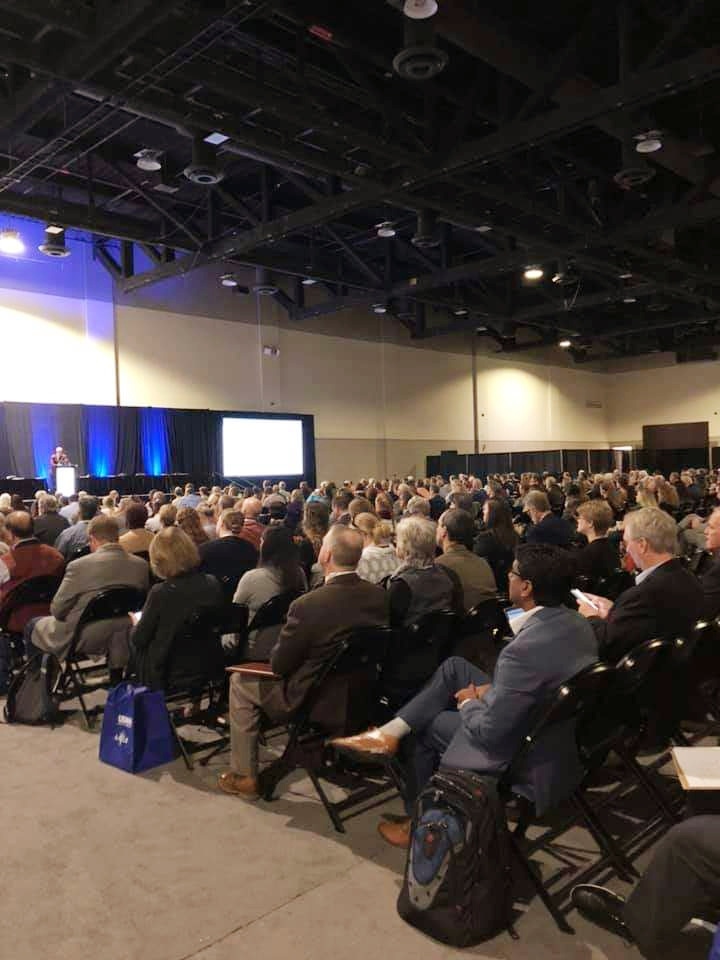Speakers at joint U.S Animal Health Assn. and AAVLD annual conference addressed challenges related to control of African swine fever.

UPDATED: This story has been updated with the removal of the reference to FAO conducting research in the area of feed and feed ingredients in the transmission of the African swine fever virus. FAO's chief veterinary officer Juan Lubroth has indicated in follow-up correspondence that FAO is not doing work in this area as was indicated in the original story. The article also referenced the number of veterinarians in China and implied that by volume they are hard to reach but, according to Lubroth, while that was been the case in an outbreak of ASF in Belgium, that is not something specific to China as was indicated.
-----
Multisectoral and multilateral coordination and collaboration among stakeholders, including commercial and allied industries, such as transportation and processing, is a key component in the prevention, preparedness and detection of Africa swine fever (ASF), Dr. Juan Lubroth, chief veterinary officer of the U.N. Food & Agriculture Organization, told attendees at the joint U.S. Animal Health Assn. annual meeting and AAVLD annual conference in Providence, R.I., in late October.
In doing so, Lubroth, along with other speakers at the meeting, stressed that such an approach requires both technical and financial capacity, and ideally a global view. Among other things, he said it is important to recognize the significance of prevention as part of the equation when it comes to assigning funds and support.
As of Oct. 27, 2019, 10 countries in Asia have officially reported ASF, including: China (August 2018), Mongolia (January 2019), Vietnam (February 2019), Cambodia (April 2019), North Korea (May 2019), Lao People's Democratic Republic (June 2019), Myanmar (August 2019),the Philippines (July/September 2019), South Korea (September 2019) and Timor-Leste (September 2019).
Among those tools useful in the control of ASF in the European Union, Lubroth said have been harmonized legislation, scientific guidelines and a disease notification system; national contingency plans; an EU and National Reference Labs diagnostic manual; training; EU-funded research programs; European Commission audits, and coordination among neighboring countries.
The mapping of wild boar populations and movement also is important in countries where feral hogs are an issue in the spreading of ASF.
Other key components of any sub-regional strategy for ASF prevention, preparedness, detection and response, Lubroth said, involve having an understanding of local pig sectors, value chains, possible risks and drivers for ASF introduction and spread as well as advocacy and communication, including awareness on ASF risks and importance for timely reporting.
In any approach, it is important to start with an understanding of the culture and local production systems. For prevention and control plans to be effective, they must take into account why local producers operate the way that they do and what it will take to get them to change, Lubroth said.
In particular, the small stakeholders in China are of the greatest concern for FAO when it comes to disease prevention and control. Some 67% of China’s pig population occurs on small farms consisting of only a couple of pigs each. This is a segment that is hard to reach and educate on the importance of disease prevention, Lubroth said.
Likewise, there are a half-million veterinarians at the provincial and federal levels in China. Lubroth noted there have been situations where veterinarians have been a vector of ASF between farms.
To date, there has been no initiative or policy move undertaken by China's leadership to attempt to change the structure of the Chinese hog industry to that of more intensive and controlled systems.
Culling and disposal practices in Southeast Asia continue to be a concern as well, Lubroth noted. The number of pigs that have been buried and destroyed has been massive, and it has not been pretty from the standpoint of animal welfare, he said.
Dr. Conrad Estrada, area director of the U.S. Animal & Plant Health Inspection Service – International Services in Hanoi, added that in Vietnam, cleaning and disinfecting of some operations has been a challenge largely because of the dirt floors of those operations. Vietnam slaughters some 50 million hogs a year.
Feed as a vector?
Whether feed and feed ingredients are a vector for the ASF virus, as well as other viruses, into hogs was something several speakers discussed. Lubroth said processing can often kill disease-causing viruses, but the potential for cross-contamination always exists.
Dr. Scott Dee of Pipestone Systems talked with the group about the plans in place at its swine management company to minimize the risk of disease spread. He pointed out that it is highly likely that a significant number of viruses survive for extended periods in soy-based products and that soy products coming in from ASF-infected countries could impose a risk to the U.S. hog population.
In terms of volume and country of origin of soy-based imports from Asia, Dee said the total amount coming into the U.S. was recorded at 104,707 metric tons in 2018. Of that, 52.6% came from China and 42.8% from the Ukraine. The main point of entry, he said, was San Francisco, Cal.
Dee said Pipestone has put in place a Responsible Imports program with its international suppliers whereby those suppliers are required to have separate entry and exit points for people and products and mechanical biosecurity protocols throughout their facility. Suppliers, among other things, must also have a designated holding time (minimum of 30 days) at a temperature of 20 degrees C. Pipestone audits its international suppliers twice a year.
“There is a growing body of experimental evidence suggesting that feed and feed ingredients (soy-based products in particular) may serve as vehicles for the transport and transmission of foreign animal diseases such as the ASF virus,” Dee said. He also called for the development of a national program to unite independent efforts that are underway in the hog industry.
“ASF is going to be around Asia for decades,” Lubroth said. It isn’t something that is going to go away. Is the U.S. next? Time will tell on that, he said, but he encouraged those in the industry, and at all levels of the veterinary services sector, to work together to put in place policies and stop-gap measures that go beyond even the traditional farm-to-fork approach. It is important to keep in mind, Lubroth said, that things can and do happen after the fork.
About the Author(s)
You May Also Like



